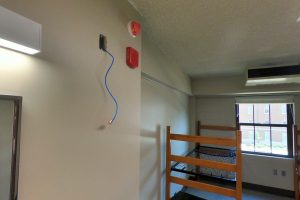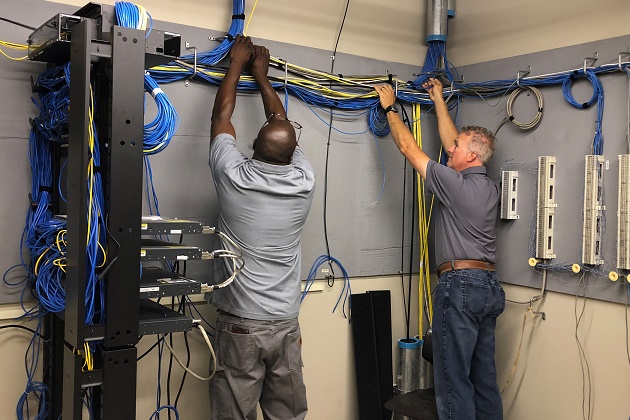Construction is a natural element of summer in Tuscaloosa. One often overlooked but crucial component of construction on campus is the implementation of information technology.

“If there’s a construction site on campus, chances are, you’ll see an OIT vehicle or personnel right in the middle of it,” said Lynn White, UA Office of Information Technology project coordinator.
White has worked as a project manager with OIT for five years, overseeing the technology implementation of critical construction projects such as the renovations at Paty Hall and the Aquatic Center, and construction of the Capstone Parking Deck.
“Summer is undoubtedly our busiest time trying to get as much work done as possible before students return,” said White. “But we stay busy throughout the year designing technology for upcoming construction projects.”
White and fellow OIT project coordinator Keith McKnight share IT project management responsibilities for more than 90 current projects. One particularly interesting project that is wrapping up is the remodel of University Hall, originally built in 1938. The $28 million renovation ensures the UA community will enjoy some of the most advanced technology in one of the most historic buildings to be updated on campus.
“As you can imagine, University Hall wasn’t originally designed to be compatible with a wireless internet network,” said McKnight. “OIT networking engineers had to create a completely new network design for the building.”
OIT staff worked to rewire the building for data, wireless internet, cable TV and also built in special needs including internet connections for video recording studios and fiber connections to a multimedia asset management system. University Hall will be the new home for the College of Continuing Studies and is scheduled to be complete by the start of the fall semester.
Another major project nearing completion is the Capstone Parking Deck. The four-story parking deck will provide more than 1,000 new parking spaces. The deck’s strategic location at the southeast corner of campus will support events at campus facilities like Moody Music Hall, Coleman Coliseum and Bryant Conference Center.

“A major part of what we do is manage the IT timeline,” said White. “We have to be ready, and our equipment has to be delivered, configured and installed to provide active service by the time for inspection. IT services depend on the completed work of others, like electricity, so we have to be flexible while ensuring we meet deadlines.”
OIT provides many services during the construction process. In addition to network connections that are needed for phones, computers and workstations, OIT provides service for emergency public address systems; point of sale registers; time clocks; campus cable TV; heating, ventilation and air conditioning monitoring; elevator phones; fire alarm connections; refuge phones; digital signage and audiovisual connections.
OIT has assisted in providing IT support of the recent ADA elevator project on campus, strategically installing wireless access points to support elevators in buildings across campus. The Ferguson Center was the first building to achieve this ADA service.
“If an individual is unable to reach or use the buttons in an elevator, they can now use an app to select their floor,” said McKnight. “For the app to function, we had to ensure internet connectivity in elevators.”
The team is also working through the Paty Hall renovation project which will feature wireless connectivity and cable TV in every room as well as electronic access control on every door.
“We start planning on these projects a year or eight months in advance,” said White. “We work with the architect to determine pathways to data closets and fiber entrances. We look at the overall scheme and decide the best way to bring service to the building. The bottom line is that the project has got to be finished on time and on budget.”
